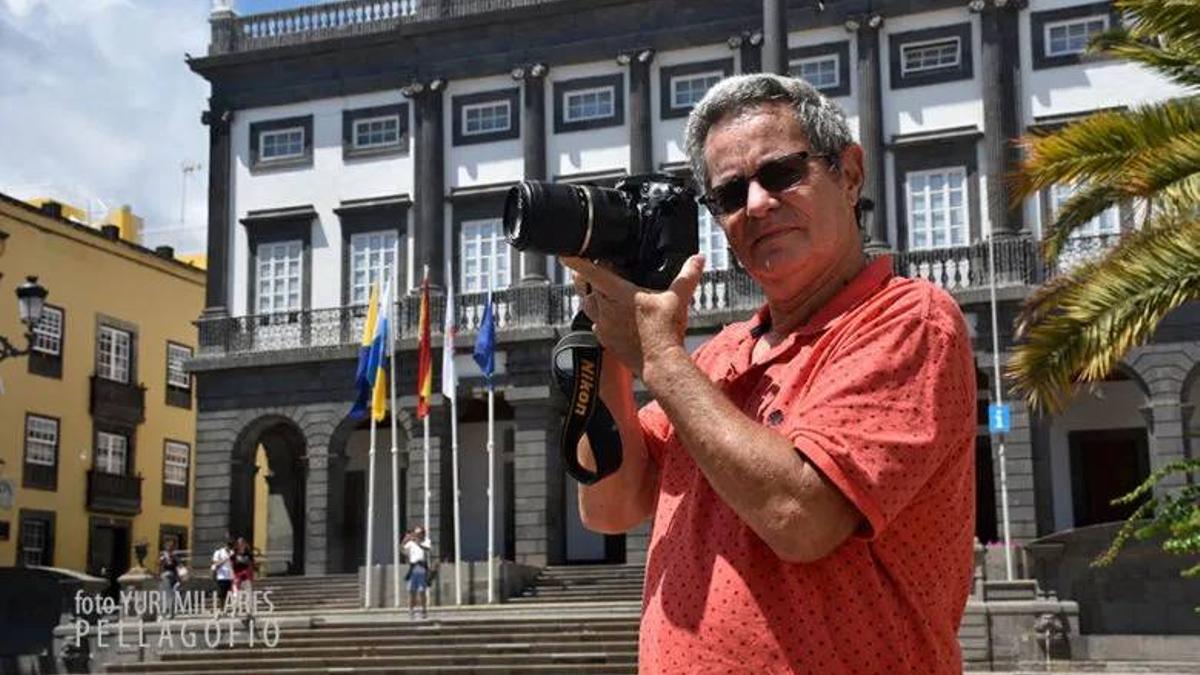
Francisco González Concepción / The province
The guiding force behind this gathering was Francisco González Concepción, known as Paco, who traversed the beautiful landscapes on both coasts, always accompanied by his cameras. He was on the dock of Santa Cruz de Tenerife when he witnessed a plane crash. Unfortunately, the images he captured were not developed properly, resulting in what could have been an exceptional journalistic piece becoming a source of frustration. The photographer was present, as we noted, yet his work was incomplete, unclear, and indistinct. A rightful cause for annoyance. Nevertheless, he persevered tirelessly in pursuit of fresh stories.
Paco has etched his name into the photographic narrative of the Canary Islands, consistently chronicling significant events and serving as a keen observer of social movements, both day and night, in small venues or expansive settings. He has, in essence, captured everything—or nearly everything.
Recently, he gathered in the Canarian town, a uniquely significant site in the capital of Gran Canaria, more than seventy journalism professionals who breathed life into this reunion of Canarian reporters, spanning two centuries, specifically from 1960 to 2000, bridging the 20th and 21st centuries. This nostalgia-filled event allowed attendees to reminisce about their experiences over the years, including the challenges and creative solutions they employed while fulfilling difficult assignments.
We were there, sharing a wealth of experiences accrued over countless years, driven by a passion for journalism and a commitment to conveying information across various formats, informed by the academic knowledge acquired in universities. When we congregated in press conferences, it transformed into a trial run for our skills.
Print journalism, live radio, recordings, and audiovisual broadcasts… Journalists often understood that they were not the main figures. They were, instead, documentarians of the present, attesting to the events as they unfolded. Their mission was to report news, to create impactful stories, to enhance the engagement of readers, listeners, and viewers.
For all of us present, those were unforgettable years, each contributing in their own way, whether it was seeking the outcome of a regional competition or anxiously waiting for the developed photo using those primitive methods. Years filled with hard work and devotion, when competition was genuine and the use of microphone lines, whether two or four wires, posed a considerable challenge for those receiving the signal on their devices.
All of us were thinking about those who were absent. We yearned for their dedication and sacrifices, their passion that allowed them to be ever-present while navigating to the newspaper’s or radio station’s headquarters.
We certainly wanted to hear from Second Almeida and Armando Marcos. They filled the table alongside Pepe Martín Ramos. We also greeted Leopoldo Fernández and Gustavo Armas, who journeyed from Tenerife, and so many colleagues who remained familiar faces when the realm of journalism expanded through communication departments and modalities that reflected the continual evolution we were, often unknowingly, undertaking amidst various constraints.
Paco González Concepción began to receive invitations to return to Tenerife and organise a similar meeting at a regional level. This served to reaffirm that, fundamentally, we have always been close to one another. Moreover, it aims to demonstrate to new generations of journalists—navigating through difficulties, disillusionment, technological progress, and remote working—where they came from, as the essence of journalism will always endure.
















